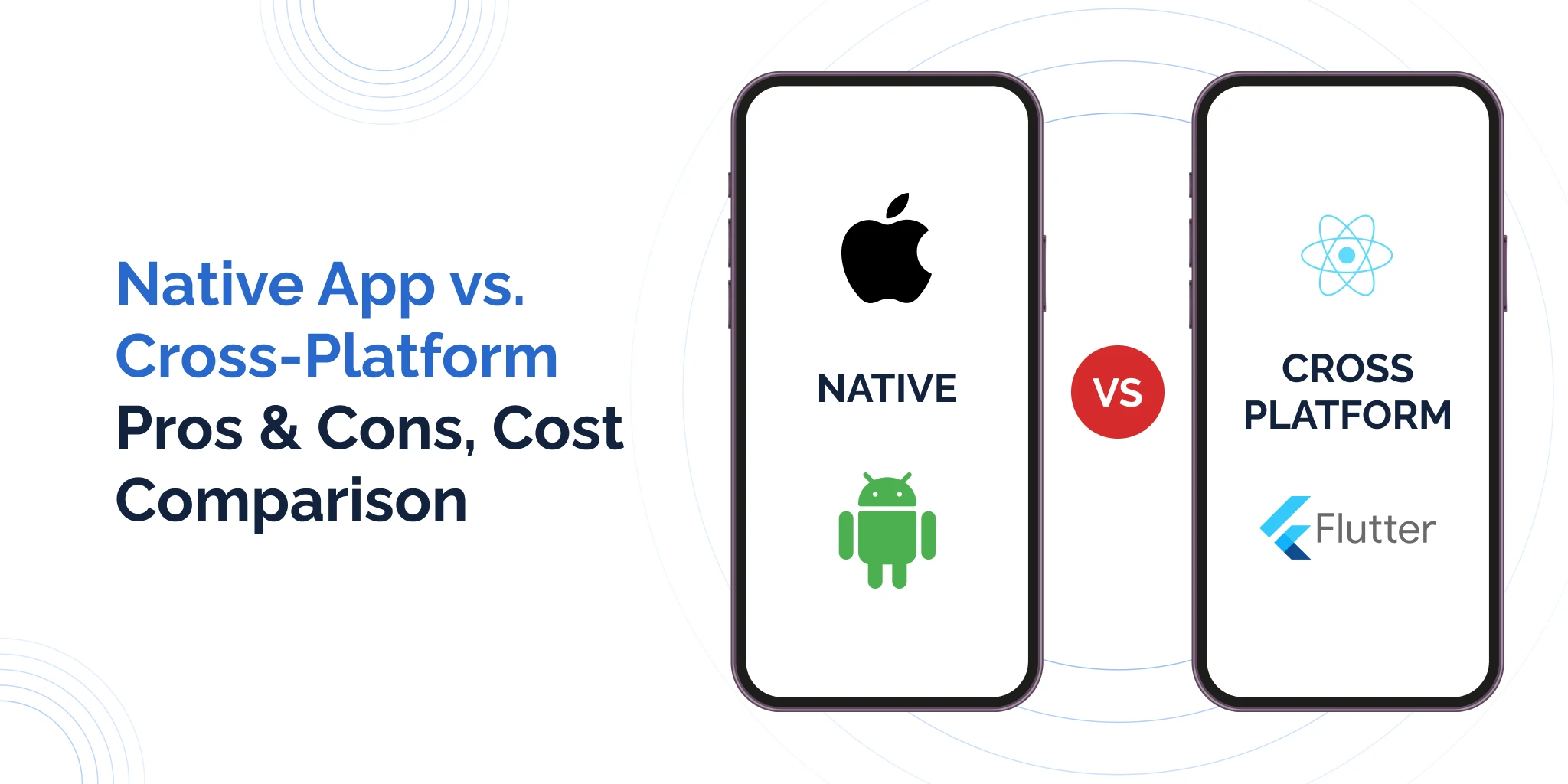When Should You Choose Native Development? Go with native if: Example: Banking apps, Uber-like apps, AR experiences, and mobile games often use native development. When Should You Choose Cross-Platform Development? Choose cross-platform if: Example: Social media apps, eCommerce platforms, fitness trackers, productivity tools. Tool Spotlight (2025 Trends) Flutter React Native Kotlin Multiplatform Cost Comparison in India (2025 Estimates) Development Type Estimated Budget (INR) Time to Market Native (iOS + Android) ₹10 – ₹25 Lakhs 4 – 6+ months Cross-Platform ₹6 – ₹15 Lakhs 2 – 4 months ???? These are average figures. Cost varies based on feature set, integrations (like payment gateways, chat, analytics), and design complexity. What About Security? Native apps typically offer better security because: However, cross-platform apps can also be made secure — it just takes additional setup and care with 3rd-party plugins. Real-World Example: What We Recommend to Clients At SKM It Solution, we usually follow this rule: If your goal is… Our Recommendation Quick MVP for launch or fundraising ✅ Cross-platform (Flutter/React Native) Long-term growth, scalability, high complexity ✅ Native Mid-level complexity + limited budget ✅ Cross-platform Performance-critical (gaming, AR, fintech) ✅ Native Every project is different — so we always recommend a free consultation before jumping in. Conclusion: Native vs. Cross-Platform – Which One Wins? There’s no one-size-fits-all answer. The best choice depends on: - Go native when performance and user experience are mission-critical. Either way, the most important decision is choosing the right team to build your app — one that understands both technology and business strategy.
- Go cross-platform when you want speed, reach, and budget efficiency.

Native vs. Cross-Platform App Development: Which One Is Right for Your Business in 2025?
Should I build my app using native development or go cross-platform? This isn’t just a technical choice — it affects your time to market, development cost, scalability, user experience, and long-term maintenance. In this blog, we’ll break down everything you need to know to choose the best path for your project. What Is Native App Development? Native app development means creating platform-specific apps — one for iOS and another for Android — using the respective official languages and tools: Each app is developed independently to run optimally on its platform. Advantages of Native Development Disadvantages of Native Development What Is Cross-Platform App Development? Cross-platform development allows you to write a single codebase and deploy it on both iOS and Android. Popular tools include: These frameworks compile your code into native code or render via native components. Advantages of Cross-Platform Development Disadvantages of Cross-Platform Development Comparison: Native vs. Cross-Platform Factor Native Cross-Platform Performance ✅ Best ⚠️ Slightly lower Development Speed ⚠️ Slower ✅ Faster Cost ⚠️ Higher ✅ More affordable Code Reusability ❌ No ✅ Yes Access to Device Features ✅ Full access ⚠️ Limited or needs bridging UI/UX Control ✅ Native look & feel ⚠️ Close, but not perfect Best For Complex, large-scale apps MVPs, startups, quick launch
Comment
Let's discuss and work together for your project.
Just drop us line on info@skmitsolution.com or just say HI in chat box, We would love to hear from you.
